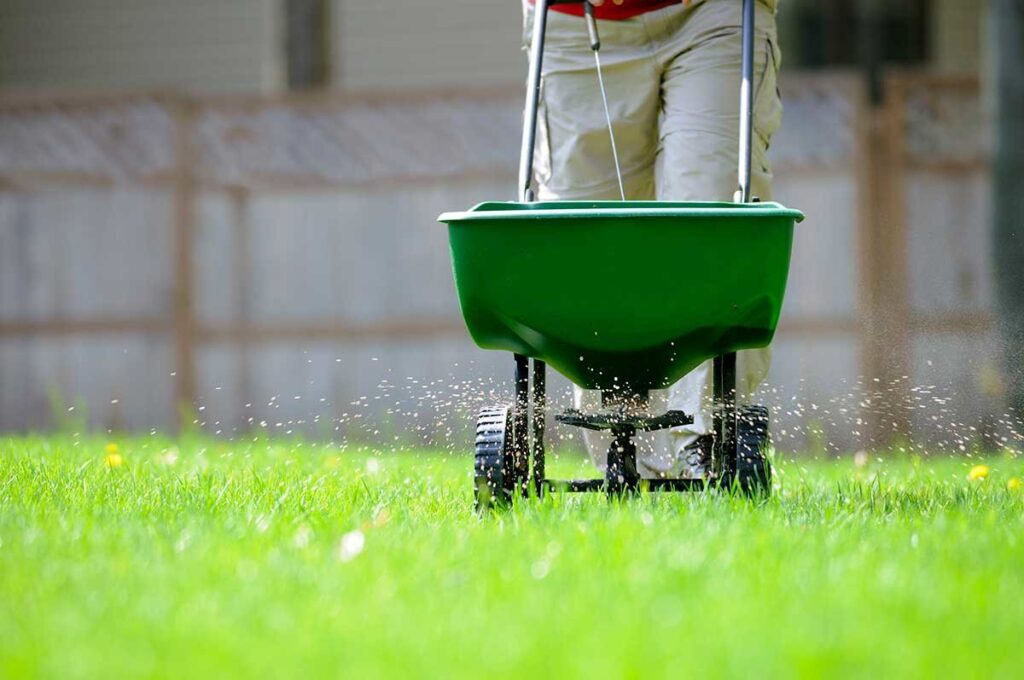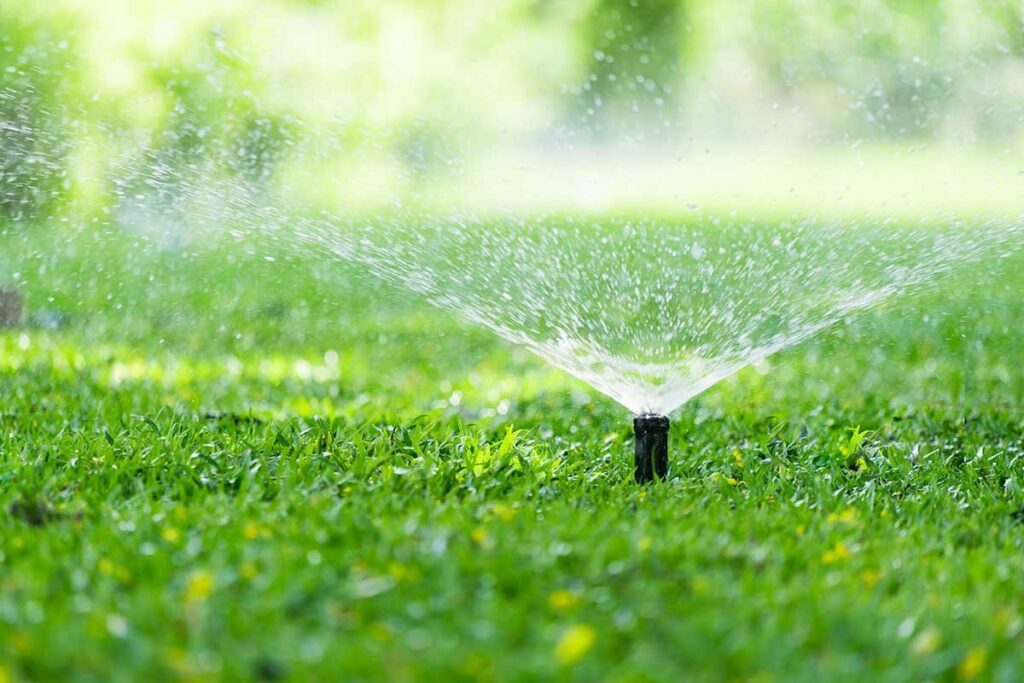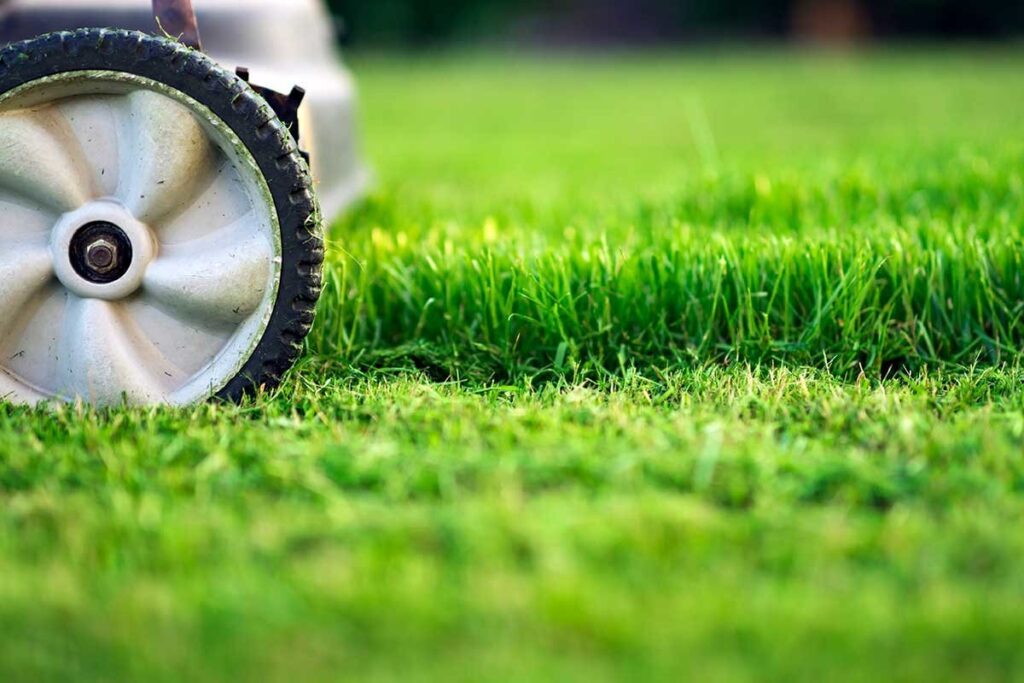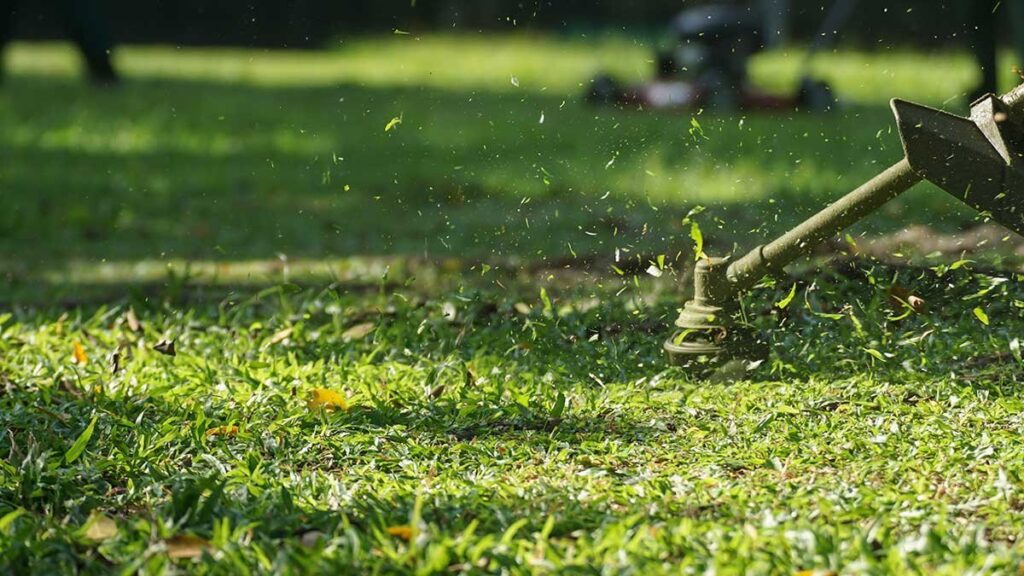The spring thaw brings excitement and joy to many people. The cold winter months are leaving, and now we can look forward to using our yards for recreation. I don’t know about you, but as a homeowner, one of the simple pleasures I have is mowing my lawn. And like many homeowners, I strive to have the best yard in my neighborhood. Having lush, green grass along with healthy trees, plants, and flowers is my goal every year.

Photo Credit: iStock.com/groveb
Fertilizing Your Lawn
Lawns need to be fed to thrive. In colder, dry climates, as we have here in Idaho, it’s good to fertilize lawns three to five times each season. In the early spring, a good fertilizer with crabgrass/weed prevention is a good start. Then using a grub/lawn pest prevention about a month or so after the initial fertilizer application. Next, from late May till the end of June, a weed and feed type of product should be applied. In July, a lawn food with insect control should be used. In the fall months, you can apply a fall weed and feed that’s formulated to give your lawn nourishment through the fall and winter months. Optionally, you can use a winterized lawn food in late October until early November.
Be aware that overfertilizing can have a negative effect on your lawn, so make sure you follow the directions that accompany the product you’re applying.
There are several do-it-yourself lawn programs that you can subscribe to if you’re interested in having ready access to the fertilizers you’ll need:
Zamzow’s Annual Lawn Program
Scott’s Lawn Program
Sunday Lawn Program

Photo Credit: iStock.com/Fahkamram
Watering Your Lawn
Lawns in our area do most of their growth during the spring and fall months, so it’s essential to make sure they’re watered regularly. Here in the Pacific Northwest, and the Treasure Valley, we have more clay-based soil, so water has a tendency to roll off the lawn. You may have to schedule waterings a couple of times a day a few times during the week or take advantage of “soaker cycles” in your irrigation system. Deep and infrequent waterings, where 1 to 2 inches of water are delivered each week, is ideal. You can use a tuna can to measure how much water your sprinklers are putting out during a defined time.
Overwatering your lawn can expose it to disease or lead to rot as it can’t absorb the moisture fast enough. Make sure you have a consistent schedule for watering. I usually water first thing in the morning so the sun is able to help evaporate any excess water. I’ve read that watering in the evening can lead to mold and other unwanted things that can affect your lawn’s health.

Photo Credit: iStock.com/MariuszBlach
Mowing the Lawn
While it’s tempting to mow the lawn weekly, most experts agree that mowing the lawn every 10 to 14 days is ideal. Make sure your lawn mower blades are sharp as dull blades tend to “tear” the grass and cause it stress. Stress then leaves the lawn susceptible to disease or insect invasions. You also don’t want to cut your lawn too short, especially with the first cut of the season. Trim no more than 1/3 of the height of the grass to maximize health and growth. Also, don’t mow your lawn when the sun is at its peak, generally between 10 a.m. and 2 p.m., as that can affect your lawn’s ability to recover. I typically mow in the early evening or in the morning after sunrise.

Photo Credit: iStock.com/uncle_daeng
The Perfect Lawn
- Don’t Overwater
- Don’t Over Fertilize
- Don’t Over Mow
- Spot Treat Weeds
Spring is around the corner, and following the suggestions above will help you have a lawn that is the envy of the neighborhood.

